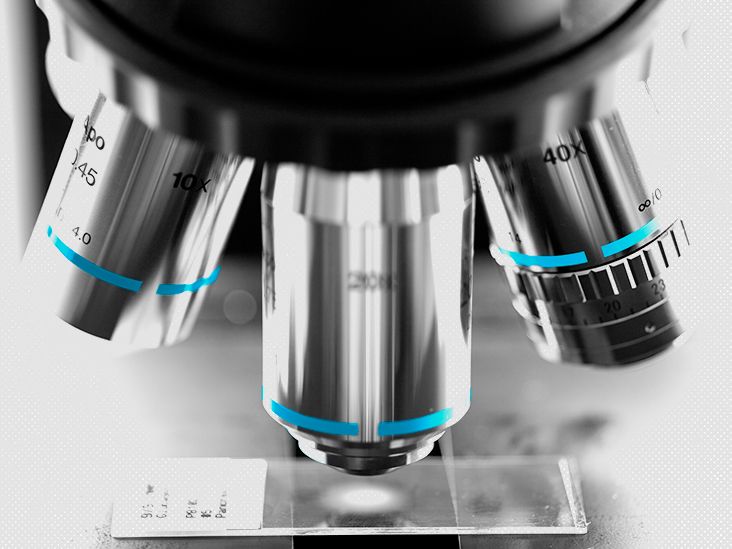Multiple myeloma (MM) and lymphoma are both cancers that affect cells in a person’s blood. MM is a cancer of plasma cells, while lymphoma is a cancer of lymphocytes. Both plasma cells and lymphocytes are types of white blood cell.
Cancer resources
To discover more evidence-based information and resources for cancer, visit our dedicated hub.
MM is a cancer of plasma cells, which are present in the bone marrow.
Lymphoma is a cancer of lymphocytes. These white blood cells originate in the bone marrow and are present in blood and lymph tissue.
This article compares the two different types of cancers. It also looks at the other types of lymphoma.
A note about sex and gender
Sex and gender exist on spectrums. This article will use the terms “male,” “female,” or both to refer to sex assigned at birth. Click here to learn more.

The following table compares MM and lymphoma.
| MM | Lymphoma | |
|---|---|---|
| Definition | a cancer of plasma cells present in the bone marrow | a cancer of lymphocytes, which are white blood cells |
| Risk factors | Risk factors • being over the age of 65 years • being male • family history of MM • obesity • having other plasma cell diseases | Risk factors • being male • certain viral or bacterial infections • being in one’s 20s or over the age of 55 years • having a weakened immune system • having an autoimmune condition • family history of lymphoma • obesity • radiation exposure |
| Symptoms | Symptoms include: • bone pain and weakened bones • low levels of red and white blood cells and blood platelets • increased thirst • frequent urination • dehydration • kidney problems • back pain • weakness • shortness of breath • itching • swollen legs • more frequent infections | Symptoms include: • enlarged lymph nodes • itchy skin • fatigue • loss of appetite • coughing and chest pain • trouble breathing • fever • night sweats • unexplained weight loss • swollen abdomen • feeling of fullness even after eating small amounts of food • easy bruising |
| Treatment | Treatment options • chemotherapy • immunomodulating agents • proteasome inhibitors • stem cell transplants • surgery and radiation therapy | Treatment options • chemotherapy • radiation therapy • immunotherapy • stem cell transplants |
| Outlook | The average 5-year relative survival rate for a person with MM is | The average 5-year relative survival rate for a person with Hodgkin’s lymphoma is The average 5-year relative survival rate for someone with non-Hodgkin’s lymphoma is |
The following are the causes and risk factors for MM and lymphoma.
MM
According to the
- being over the age of 65 years
- being male
- family history of MM
- obesity
- having another plasma cell disease, such as monoclonal gammopathy of undetermined significance (MGUS)
Furthermore, MM affects African American people more than twice as frequently as it does white people. However, health experts do not know the cause of this.
Lymphoma
The two main types of lymphoma are Hodgkin’s lymphoma and non-Hodgkin’s lymphoma.
Factors that increase a person’s risk of Hodgkin’s lymphoma
- being in their 20s or over the age of 55 years
- being male
- family history of lymphoma
- having a weakened immune system
- having an autoimmune condition
The Epstein-Barr virus (EBV) causes mononucleosis (mono). If a person has mono, they are at an increased risk of developing Hodgkin’s lymphoma. However, this risk is still very small and is about 1 in 1,000.
Factors that increase an individual’s likelihood of developing non-Hodgkin’s lymphoma
- being over the age of 60 years
- being male
- exposure to radiation
- having a weakened immune system
- having an autoimmune condition
- obesity or overweight
Moreover, specific viral and bacterial infections can increase a person’s risk of developing non-Hodgkin’s lymphoma. These include EBV, the human T-cell lymphotropic virus type 1 (HTLV-1), and the human herpesvirus 8.
In rare instances, breast implants can cause a person to develop anaplastic large cell lymphoma, which is a type of non-Hodgkin’s lymphoma.
The following are symptoms of MM and lymphoma.
MM
Signs and symptoms of MM include:
| Symptoms | |
|---|---|
| Bone problems | This includes bone pain, commonly in the back, hips, and skull. It also includes bone weakness, or osteoporosis, and broken bones. |
| Low blood counts | Symptoms of low red blood cell levels include weakness, shortness of breath, and dizziness. Low levels of white blood cells can weaken a person’s immune system and make them more vulnerable to infections. Low levels of blood platelets can cause a person to bleed more than normal, even from minor cuts. |
| High calcium levels in the blood | This can cause a number of symptoms, such as thirst, frequent urination, dehydration, kidney problems, constipation, abdominal pain, loss of appetite, drowsiness, and weakness. |
| Damage to the nervous system | This can lead to such symptoms as severe back pain, numbness in the legs, and muscle weakness. |
| Kidney problems | MM can cause damage to the kidneys. Symptoms of this often take a while to arise, but when they do they can include weakness, shortness of breath, itching, and swollen legs. |
People with MM are at a
Learn more about the symptoms of MM.
Lymphoma
The
These lumps are commonly located:
- in the neck
- under the arm
- in the groin
Typically, they do not cause any pain, but they may hurt after a person drinks alcohol.
Other signs and symptoms of Hodgkin’s lymphoma include:
- itchy skin
- fatigue
- loss of appetite
- coughing and chest pain
- trouble breathing
- fever
- night sweats
- unexplained weight loss
Non-Hodgkin’s lymphoma can also cause the lymph nodes to become swollen. This can result in the formation of lumps under the skin.
Other symptoms of non-Hodgkin’s lymphoma include:
Learn about the early signs and symptoms of lymphoma.
This section discusses treatment options for MM and lymphoma.
MM
A doctor will assess a person’s health and individual goals to help create a treatment plan that best suits their needs.
Treatment options for MM may
- chemotherapy, which destroys or controls the growth of cancer cells
- immunomodulating agents, which work alongside the immune system to kill cancer cells
- stem cell transplant, which can produce new, healthy blood-forming cells to replace the ones that chemotherapy destroyed
- surgery, though this is
uncommonTrusted Source
Lymphoma
Chemotherapy and radiation therapy are both
A person with lymphoma
Stem cell transplants make another effective treatment for most types of lymphoma.
Factors that can affect a person’s survival time include their age, general health, and time of diagnosis.
MM
The 5-year relative survival rate for MM is
Lymphoma
The average 5-year relative survival rate for a person with Hodgkin’s lymphoma is
The average 5-year relative survival rate for a person with non-Hodgkin’s lymphoma is
A relative survival rate helps give an idea of how long a person with a particular condition will live after receiving a diagnosis compared with those without the condition.
For example, if the 5-year relative survival rate is 70%, it means that a person with the condition is 70% as likely to live for 5 years as someone without the condition.
It is important to remember that these figures are estimates. A person can consult a healthcare professional about how their condition is going to affect them
When diagnosing MM or lymphoma, doctors may begin by taking a personal and family medical history. They may then carry out a physical examination.
A doctor will then order a variety of tests to diagnose the specific type of cancer.
These tests can
- blood count test
- blood chemistry test
- urine test
- bone marrow biopsy
- X-ray
- CT scan
- MRI scan
- echocardiogram
A doctor may also need to carry out a lymph node biopsy.
If an individual has cancer, they could develop another cancer. Health experts refer to this as second cancer.
If a person has a blood cancer, such as MM or lymphoma, they are likely to have another blood cancer.
Additionally, people with MM have an
Individuals with Hodgkin’s lymphoma can have any type of second cancer. However, they are at an increased risk of certain cancers that health experts associate with treatments such as chemotherapy and radiation therapy,
People with non-Hodgkin’s lymphoma can also develop any type of second cancer. They have an increased risk of a number of cancers,
Specific types of lymphoma include the following:
B-cell lymphomas
The table below gives an overview of B-cell lymphomas.
| B-cell lymphomas | |
|---|---|
| Definition | These affect immune cells called B lymphocytes. |
| Risk factors | • having a • having an autoimmune condition • having a viral infection • being over the age of • having experienced exposure to certain chemicals |
| Symptoms | • fever and night sweats • unexplained weight loss • fatigue • loss of appetite • abdominal pain • severe itching |
| Treatment | • • immunotherapy • stem cell transplants • radiation therapy |
| Outlook | The 5-year survival rate is |
Follicular lymphoma
The table below provides an overview of follicular lymphoma.
| Follicular lymphoma | |
|---|---|
| Definition | It is the |
| Risk factors | • being over the age of 40 years • having a family history of the condition • having certain viral infections, including EBV |
| Symptoms | • swollen lymph nodes • fatigue • shortness of breath • fever • night sweats • unexplained weight loss • infections |
| Treatment | • chemotherapy • radiation therapy • stem cell transplants • immunotherapy |
| Outlook | The 5-year relative survival rate is |
Mantle cell lymphoma
The table below gives an overview of mantle cell lymphoma (MCL).
| MCL | |
|---|---|
| Definition | It is a type of lymphoma that begins in the part of the lymph node called the mantle zone. |
| Risk factors | • being around 60–70 years old • being male • family history of the condition • having a weakened immune system • viral infections |
| Symptoms | • fatigue • loss of appetite • vomiting • unexplained weight loss • fever and night sweats • nausea • swollen lymph nodes in the neck, armpits, or groin • heartburn • abdominal pain |
| Treatment | • chemotherapy • immunotherapy |
| Outlook | The average survival time after a diagnosis ranges from |
Adult T-cell lymphoma
The table below shows an overview of adult T-cell (ATL) lymphoma.
| ATL lymphoma | |
|---|---|
| Definition | It is an aggressive type of non-Hodgkin’s lymphoma that affects T cells. |
| Risk factors | • being around • having an HTLV-1 infection • being • family history of the condition |
| Symptoms | • fatigue • swollen lymph nodes • skin rashes • bone pain |
| Treatment | • antiviral therapy • chemotherapy • stem cell transplants • immunotherapy |
| Outlook | ATL has a poor prognosis, with short overall survival even with treatment. |
Lymphoplasmacytic lymphoma
The table below shows an overview of lymphoplasmacytic lymphoma (LPL), also called Waldenström macroglobulinemia.
| LPL | |
|---|---|
| Definition | This is a slow-growing type of non-Hodgkin’s lymphoma that begins in B cells. |
| Risk factors | • being over the age of • being male • family history of the condition • hepatitis C infection • having an autoimmune condition |
| Symptoms | • fatigue • weakness • fever and night sweats • swollen lymph nodes in the neck, armpits, or groin • dizziness • unexplained weight loss • visual difficulties, such as blurred vision |
| Treatment | • • immunotherapy • stem cell transplants • radiation therapy • plasma exchange |
| Outlook | The average survival time is approximately |
Learn more about types of blood cancer.
MM and lymphoma are both types of blood cancer. MM starts in plasma cells, and lymphoma begins in lymphocytes. Both of these cell types are a part of the immune system.
Treatment for these cancers includes chemotherapy, immunotherapy, stem cell transplants, and radiation therapy.
The outlook for MM and lymphoma depends on many factors. A person’s doctor can provide them with more accurate information about their outlook and treatment options based on their individual circumstances.



